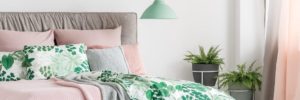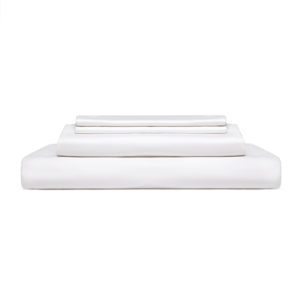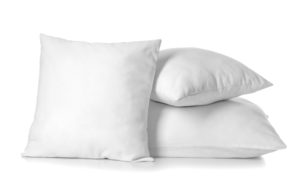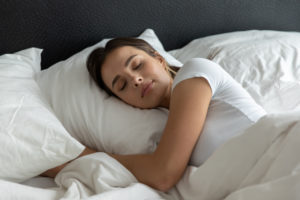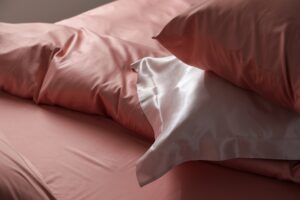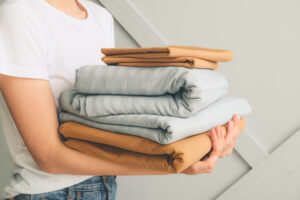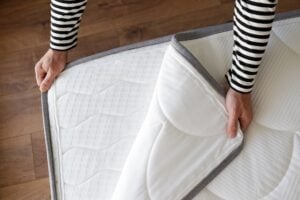How to Make a Bed
In general, a bed is made up of a mattress, a fitted sheet, pillows, and a blanket. Making your bed involves securing and arranging each of these items to create a sleep environment that is both clean and aesthetically pleasing.
Creating a tidy, comfortable bedroom begins with making your bed. Although the individual tasks are fairly simple, there are a number of details to keep track of, and they can vary depending on your bedding and your preferences.
A made bed consists of, at the very least, a mattress, a fitted sheet, pillows, and a blanket, such as a comforter or a duvet. We’ll break down what exactly these things are and how to put them together correctly. We’ll also discuss additional bedding accessory options and why it’s a good idea to make your bed daily.
What You Need to Make a Bed
From mattress pads to throw pillows, there are a variety of options available on the market when it comes to bedding. However, only some of these are considered essential.
Mattress
A mattress is the main component of a bed. There are many different types of mattresses on the market today, but they are usually composed of layers of supportive and cushioning material, such as foam, latex, and springs. The height and feel is often slightly different from mattress to mattress, which means the process of making each bed can vary a little.
Fitted Sheet
A fitted sheet is a thin layer of fabric that covers your mattress. Outfitted with either four elastic corners or elastic all around the perimeter to keep it in place, a fitted sheet prevents you from making direct contact with your mattress during the night. This can help enhance your comfort and also protect the mattress by keeping it cleaner and more hygienic.
Comforter or Duvet
Two of the most popular blanket options for beds are comforters and duvets. Both consist of multiple layers of fabric and insulation meant to keep you warm while you sleep. However, a duvet usually is encased in an additional layer called a duvet cover, while a comforter can be used on its own. You can choose to use either with or without a flat sheet.
Pillows
Most sleepers use a pillow at night. Pillows can be made from many different materials and are designed to provide comfort, support, and pressure relief while you sleep. There are also decorative pillows, known as throw pillows, but these are more of a design element and are not sleep necessities.
Optional Items
Every sleeper has a different set of needs and preferences when it comes to bedding. Because of this, there is a wide variety of options on the market that can help you enhance and customize the sleeping experience.
Bed Frame
People who want to raise their mattress off the floor, either for aesthetic purposes or to make room for storage, might want to look into a bed frame. Usually made of metal or wood, bed frames are supportive frameworks that change the height of your bed and can help keep your mattress from sagging.
Bed Skirt
While many people use the room under their bed as convenient storage space, this can also make things look a little cluttered. A bed skirt can be a good solution. Composed of decorative fabric, a bed skirt hangs down from a bed frame, draping to the floor and hiding anything underneath the bed.
Mattress Pad or Topper
Both mattress pads and mattress toppers are extra layers of material that go on top of the mattress but below the fitted sheet and can provide extra support or pressure relief. Mattress pads are usually thinner and are primarily designed to protect a mattress from spills or dirt. Mattress toppers are thicker and can change the feel of a mattress much more dramatically.
Mattress Protector
Located between the mattress and the fitted sheet, a mattress protector does not significantly change the feel of your bed. Instead, it can expand a mattress’ lifespan by providing another layer of protection.
Flat Sheet
A flat sheet can add a layer of insulation and comfort between your body and your blanket. However, those who sleep with a duvet cover may feel that a flat sheet is unnecessary since a duvet cover both protects the duvet and provides another layer of warmth.
Throw Blankets and Pillows
Throw blankets and pillows are usually smaller than the standard versions of these items. They are designed to add a touch of color to accent your bedroom decor. While they can be functional, most people choose to remove these items before actually getting into bed for the night.
How to Make a Bed: Step-by-Step
The exact process of making a bed depends on what bedding items you’re using. While some steps involve commonly owned items and will be the same for most sleepers, others are meant for optional items and can be skipped if they are not relevant.
Begin With the Bed Skirt
- Remove your mattress from the bed frame or box spring. If your mattress is heavy, ask someone to help you with this step.
- Place the bed skirt on top of your bed frame or box spring, making sure to align it with the edges.
- Return the mattress to the bed frame or box spring, making sure it is arranged correctly over the bed skirt. This will help keep the skirt in place.
Secure the Mattress Pad or Topper
- Clear your mattress of any linens or pillows.
- Place the pad or topper over your mattress, making sure the corners are aligned.
- If your pad or topper has them, use the elastic straps to secure it in place.
Add the Mattress Protector
- Match one of the elastic corners of your mattress protector with one of the corners of your bed.
- Pull the mattress protector over the mattress corner. Make sure it tightly covers the entire corner of the bed.
- Repeat the process with all four corners of your bed until your mattress protector creates a smooth, wrinkle-free surface.
Put On the Fitted Sheet
- Start by locating one of the elastic corners of the fitted sheet.
- Match it with a corner of your mattress.
- Pull the elastic corner of the fitted sheet over the corner of the mattress and tuck it underneath.
- Repeat this with all four corners until the sheet is pulled tightly over the bed.
Lay Out the Flat Sheet
- Lay your flat sheet over the center of your bed, making sure it hangs evenly off the bottom and sides of your mattress.
- If you like, tuck the bottom of your sheet under the bottom of your mattress. This can help prevent the sheet from sliding or bunching during the night.
- After the bottom is securely in place, tuck the sides of the sheet under the mattress, too.
Place Your Comforter or Duvet
- Place your comforter or duvet over the top of your mattress, making sure it’s in the center of your bed. Leave about 6 inches of space at the top of your bed for your pillows.
- For a tighter feel, you can tuck in the bottom and sides of your comforter or duvet like you would a flat sheet.
- If you enjoy the look, you can fold your flat sheet down over the top of your comforter.
Fluff Up Your Pillows
- Make sure each pillow is secured in a clean pillowcase before adding it to your bed.
- To fluff your pillow, take each side and push it in and out until the pillow has your preferred feel.
Top Off With Throw Blankets and Pillows
- Place your throw pillows in front of your regular pillows in your preferred arrangement.
- Fold your throw blanket in half and place it at the end of your bed.
Additional Tips for Making a Bed
While properly making your bed is an important part of maintaining a clean and healthy sleep environment, there are also some other factors to consider.
Make Your Bed Daily
According to a poll conducted by the National Sleep Foundation, respondents who made their beds were more likely to get a better night’s sleep. Because better sleep is linked to better health, making your bed daily may help you stay healthier.
Find Bedding That Fits Your Style
Your bedding choices can enhance the look and feel of your bedroom. There are a variety of colors, patterns, and designs on the market, which means there are plenty of options for many different tastes.
Wash Your Bedding Regularly
Cleaning your bedding is about more than just occasionally washing your sheets. By washing all of your bedding regularly, you can reduce the buildup of harmful bacteria and allergens. The frequency of washing depends on the item.
- Mattress: Once every six months
- Sheets: Once a week
- Comforter or Duvet: Once every two to three months
- Pillows: Once every four to six months
- Throw Blankets and Pillows: Once every three to six months
- Bed Skirt: Once every three to six months

